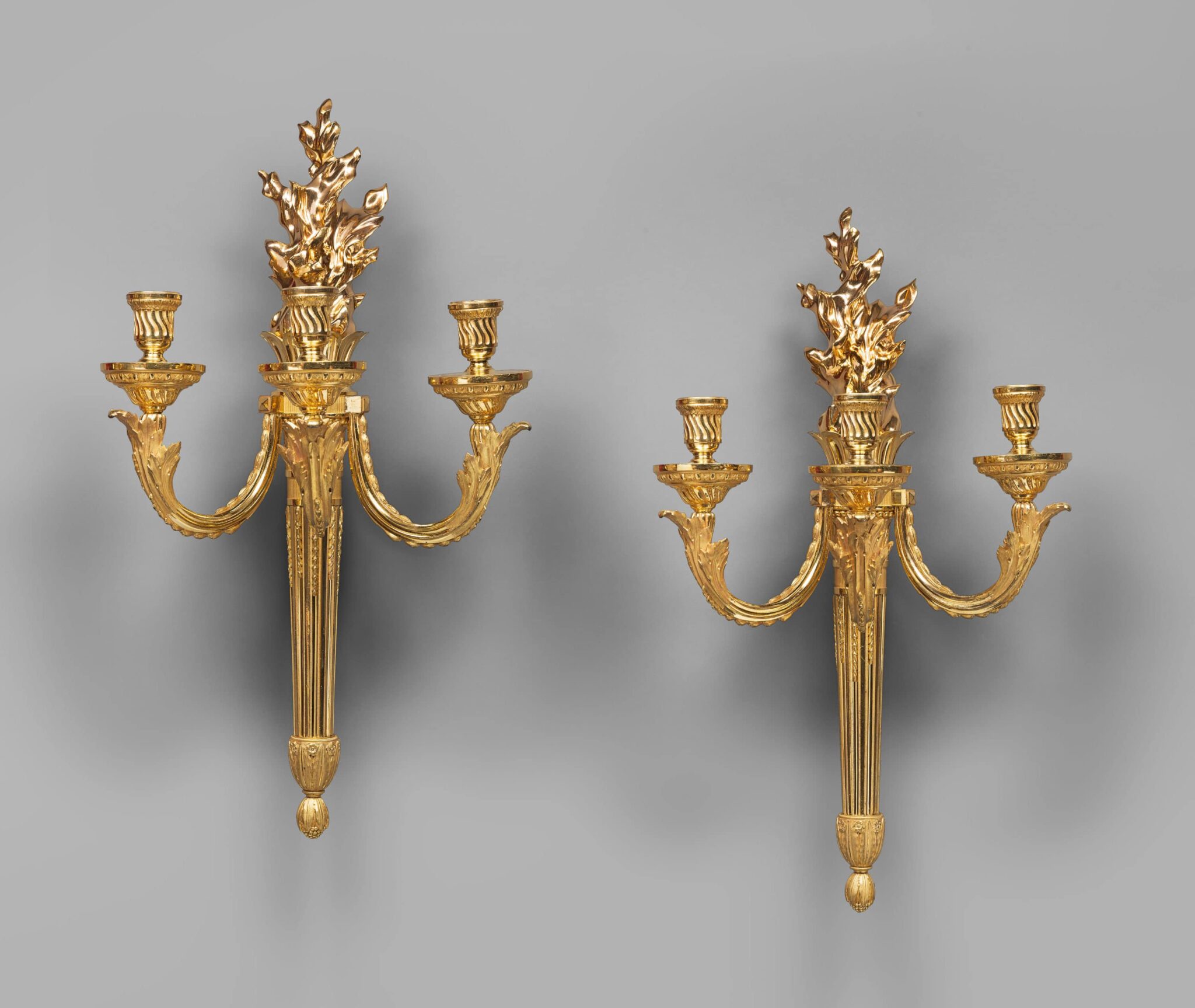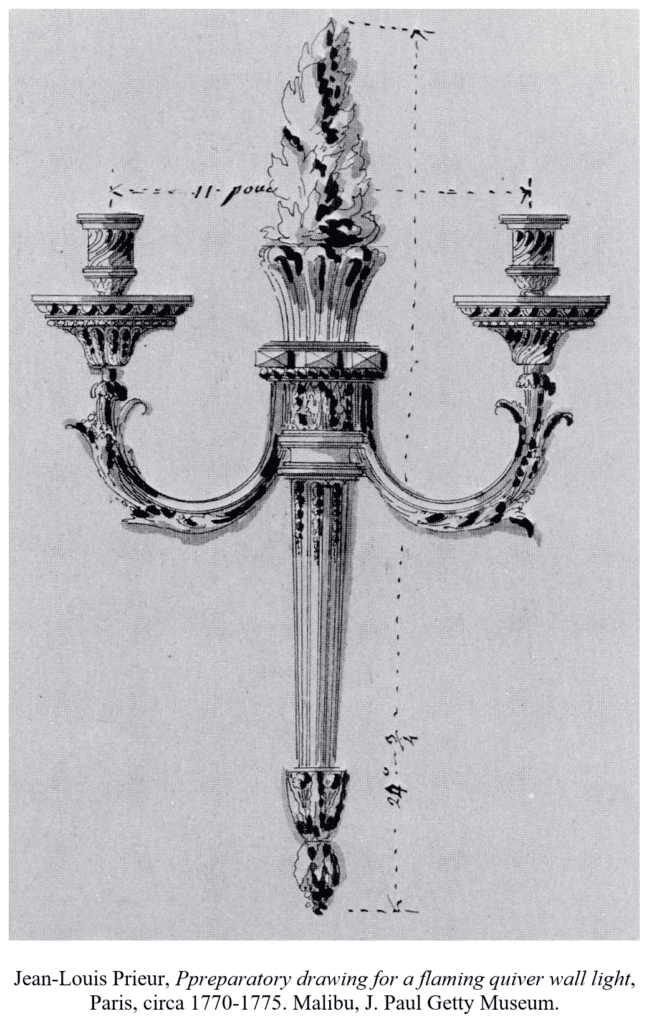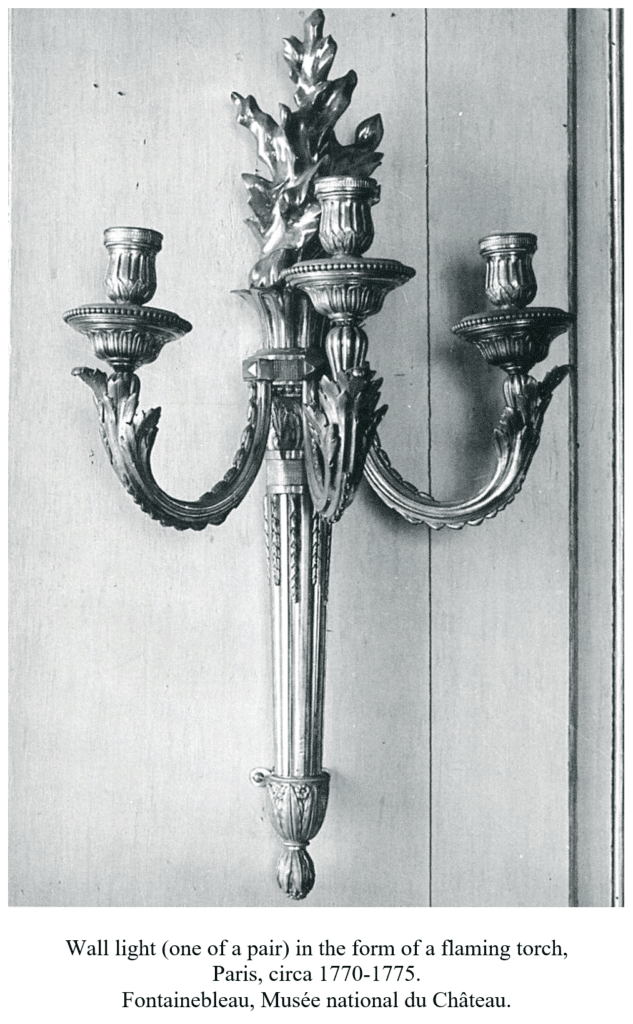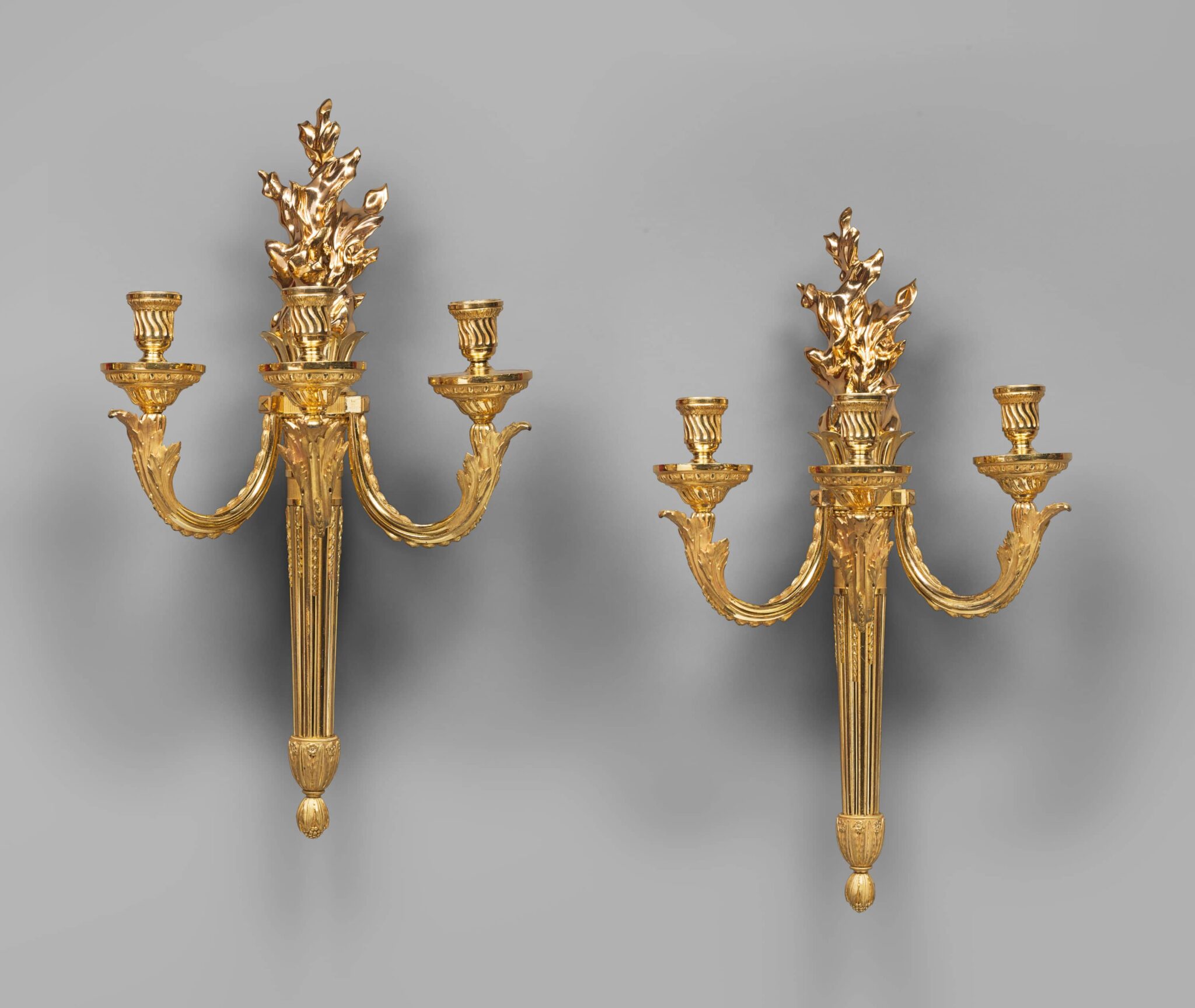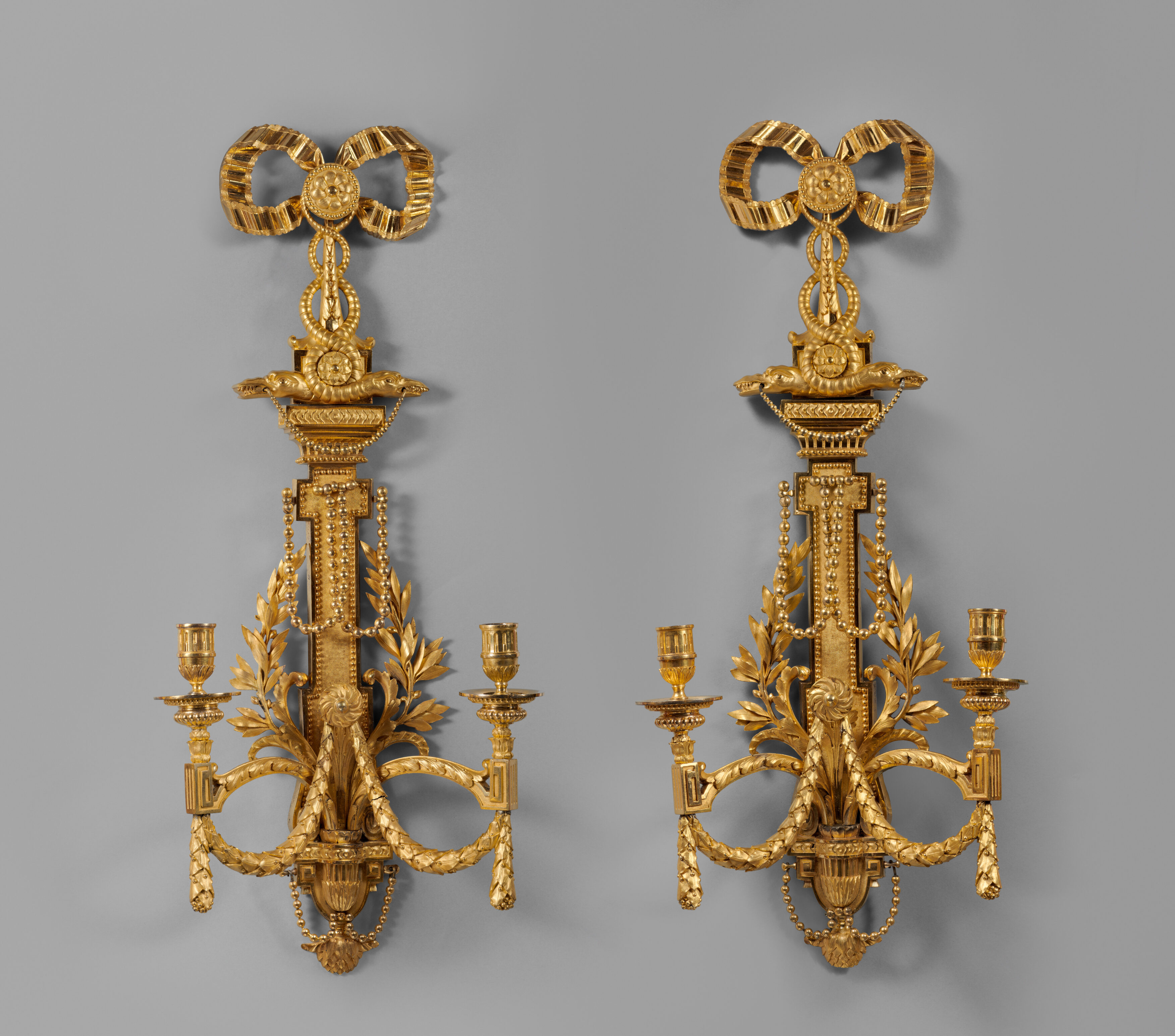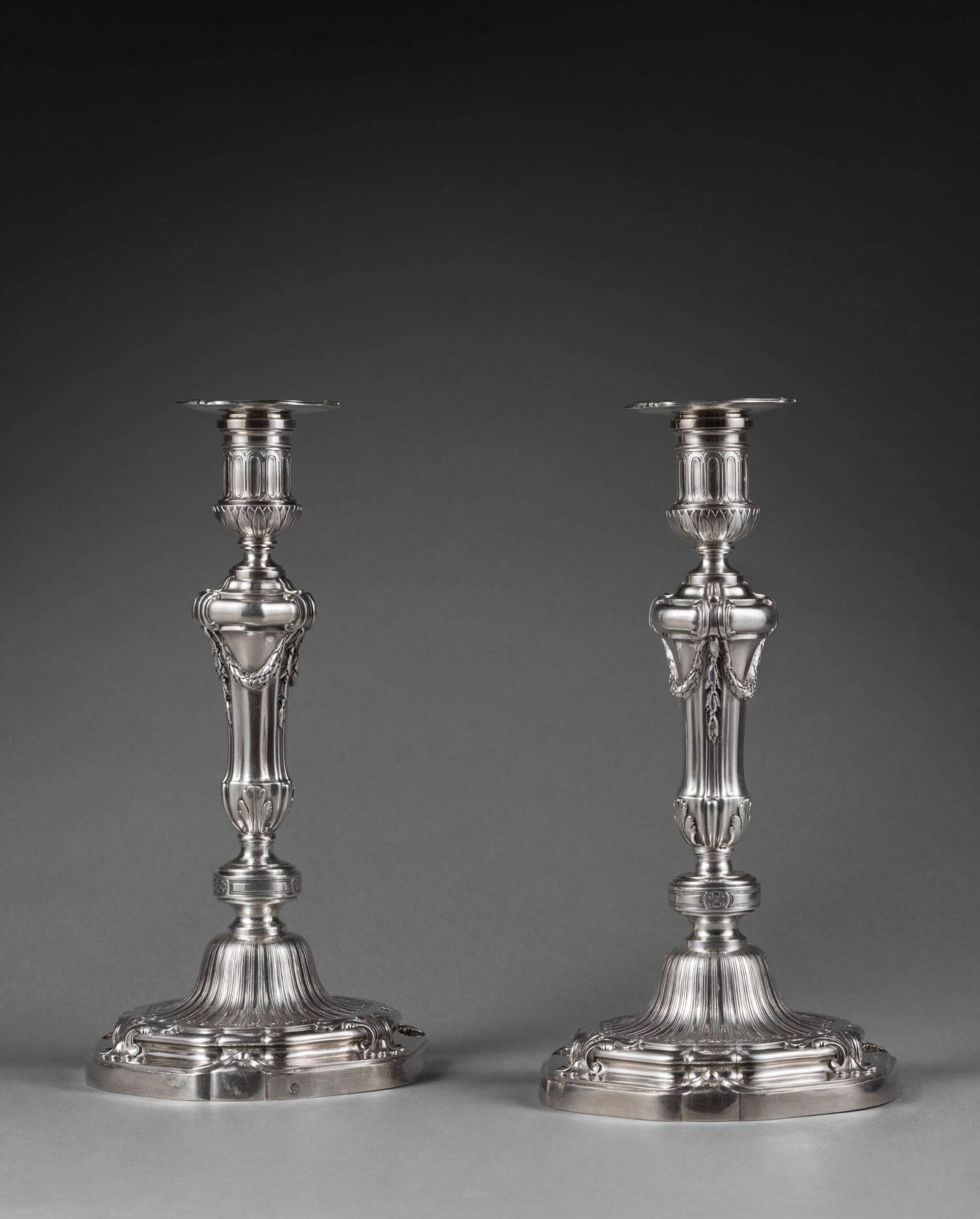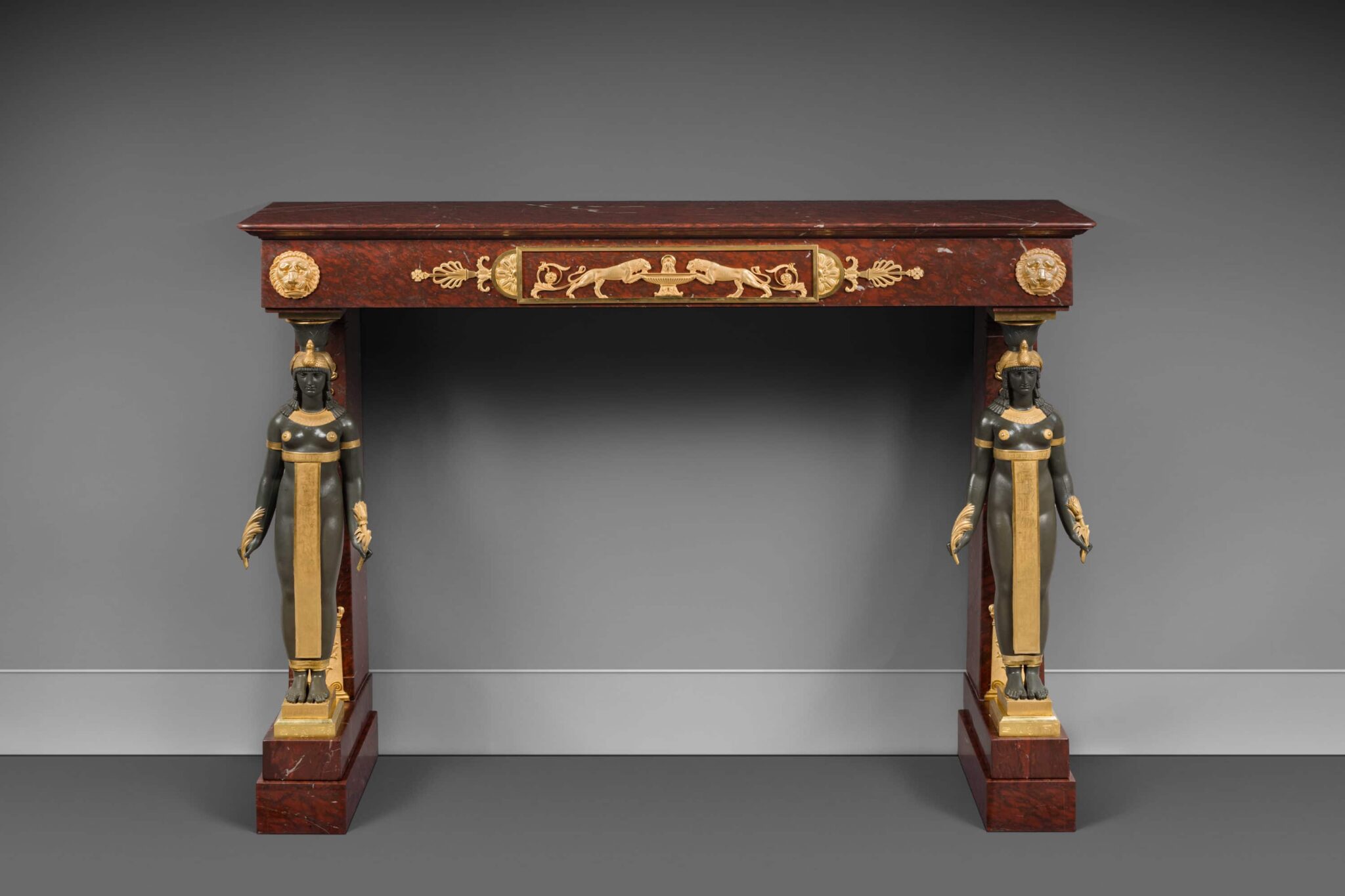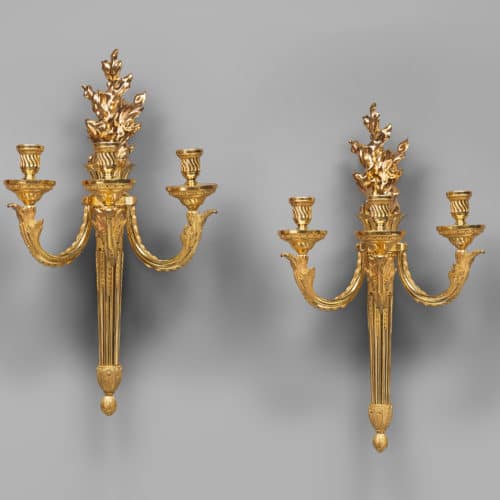Rare Pair of Three-Light Matte and Burnished Gilt Bronze Wall Lights in the Form of Flaming Torches
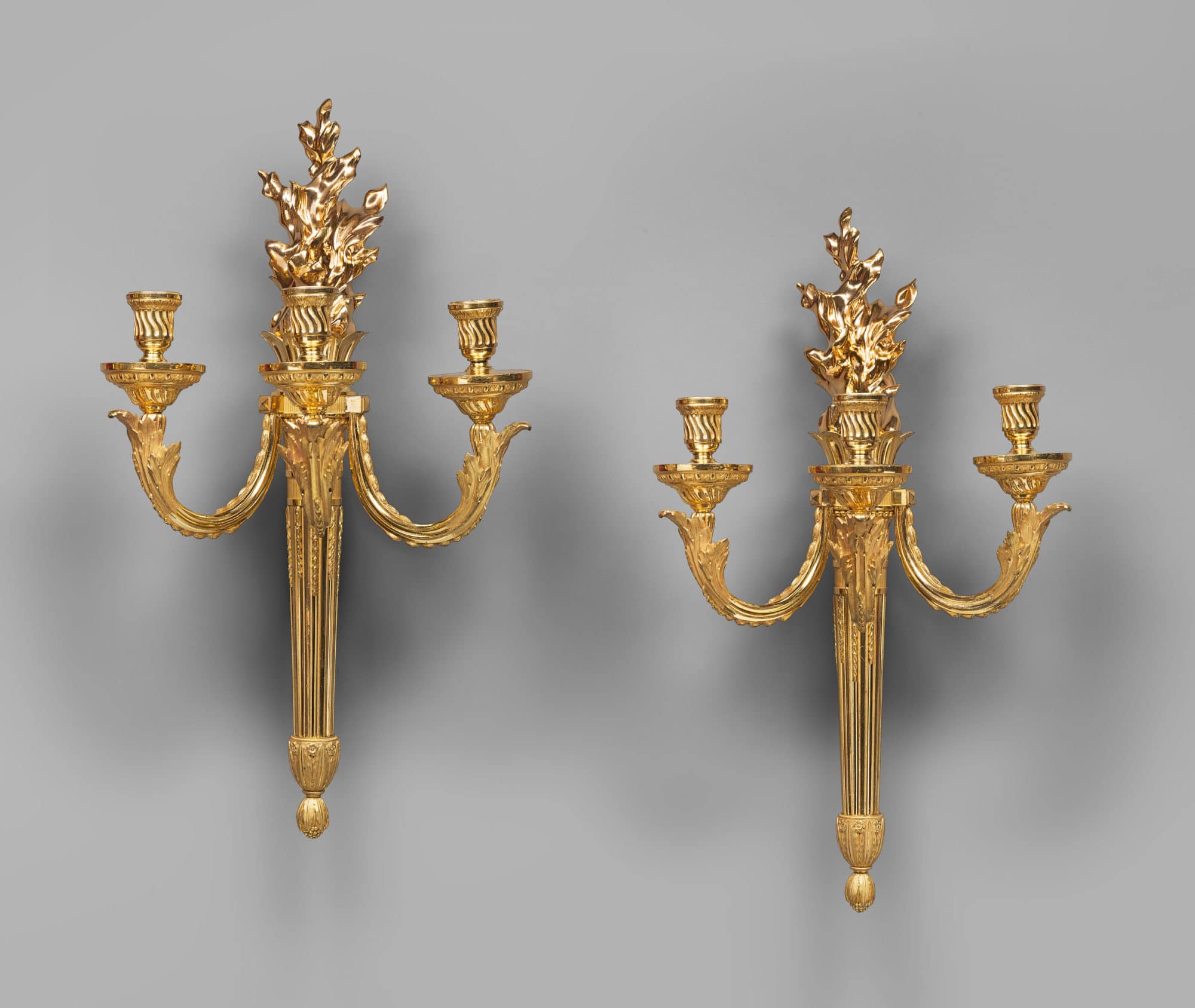
After a Preparatory Drawing by Jean-Louis Prieur (1732-1795)
Paris, Transition period Louis XV-Louis XVI, circa 1770-1775
Made entirely of matte and burnished gilt bronze, each wall light features a central tapering quiver stem that is adorned with fluting with bell-husk decoration and terminates in a bouquet finial with leaves and seeds. It is further embellished with two rings framing an acanthus leaf frieze. One of them issues the three curved light branches, which are adorned with acanthus leaves and support the drip pans and nozzles, which are decorated with egg and dart friezes and spiral fluting. In the upper portion, a robust flame emerges from a corolla of elongated leaves.
By the mid 18th century, the French decorative arts were undergoing an extensive renewal. Ornamental schemes that had prevailed for decades were being challenged. This movement, led by scholars and collectors, was prompted by the exceptional archaeological discoveries made in the ancient Roman cities of Pompeii and Herculaneum, near Naples. Over the years, a handful of collectors, artists, and artisans would inspire a new style that was directly inspired by Greek and Roman antiquity. The present wall lights were made in this context of artistic effervescence. Their ornamental vocabulary, including the flaming quiver stem, the acanthus leaves, and fluted rings, is characteristic of the finest Parisian creations of the late 1760s and the beginning of the following decade. It was inspired by the work of several designers of the time, including Jean-Charles Delafosse and Jean-Louis Prieur, who executed a preparatory drawing for the present pair of wall lights that is today in the J. Paul Getty Museum in Malibu (illustrated in H. Ottomeyer and P. Pröschel, Vergoldete Bronzen, Die Bronzearbeiten des Spätbarock und Klassizismus, Band I, Munich, 1986, p. 172, fig. 3.5.3).
At present, the model has not been attributed to any particular bronze caster, however its overall design and the quality of the casting and chasing are similar to those of certain models of wall lights that were created at the same period by important Parisian artisans, including Jean-Joseph de Saint-Germain, the great bronzier of the neoclassical revival (see J-D. Augarde, “Jean-Joseph de Saint-Germain bronzier (1719-1791), inédits sur sa vie et son œuvre” in L’Estampille/L’Objet d’art, n° 308, December 1996).
Today only a few similar pairs of wall lights are known. Among them, one pair is in the Swedish Royal Collection (illustrated in J. Böttiger, Konstsamlingarna a de Swenska Kungliga Slotten, Tome II, Stockholm, 1900). A second pair is on display in the Pavlovsk Palace near Saint Petersburg; it almost certainly comes from the former Russian Imperial Collections. (see I. Sychev, The Russian Chandeliers 1760-1830, Editions PVBR, 2003, p. 87, fig. 403). One further comparable pair is in the Musée national du Château de Fontainebleau (illustrated in J-P. Samoyault, Musée national du Château de Fontainebleau, Catalogue des collections de mobilier, 1. Pendules et bronzes d’ameublement entrés sous le Premier Empire, RMN, Paris, 1989, p. 93).
